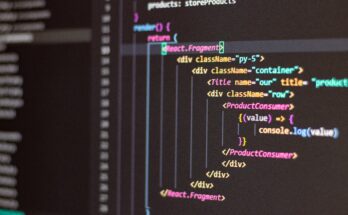There are many PHP frameworks to choose from! Laravel is one such framework, and it has been around for more than a decade. Laravel increased in popularity following the release of version three in February 2012. This is because of the usefulness of the Laravel Artisan Command Line Interface (CLI).
Artisan helps the Laravel app development process through a handy CLI tool. It will give you the ability to perform database and file operations all from one place.
Table of Contents
Prerequisites
Artisan requires only the Laravel project to be set up. Laravel 3+ comes with Artisan built-in.
Below are the requirements for the latest version of Laravel, installed via Composer.
- PHP version 7.3+
- Composer
This post assumes that you have installed the above prerequisites.
Installation
Laravel installation using Composer is quite simple. You can run the following command to install Laravel in your current directory:
composer create-project laravel/laravel my-laravel-appNote that the name of the Laravel project is “my-laravel-app”. You can, of course, change it according to your liking.
Getting started
To start your development process, navigate to the Laravel project root directory.
cd my-laravel-appRun the following command to make sure Laravel and Artisan are configured:
php artisan -vAs a result, the command mentioned above should output the Laravel version number.
Next, you may want to start your web server. You can do this by running the following command:
php artisan serveAs a result, the command will start a web server and output the server details. If you’re using the default settings, you can visit: “http://127.0.0.1:8000” to see your app running.
Artisan commands
In the directory, you will notice a PHP executable file named “artisan”. To list all commands available using Artisan, run:
php artisan listTo get help for any of the above-listed commands, use:
php artisan help <command>Make command
Throughout your development process, you will need to create many files. Consequently, the make command allows the user to set up required files for a Laravel operation. The three most common parts of any Laravel app are Models, Views, and Controllers.
The basic syntax for the make command is:
make:controller [options] <name>To create a model, you can run:
php artisan make:model myModelAs per the above-mentioned example, “myModel” is the name of the model. Of course, be aware that models are stored in the app folder. The Model can also be stored in the app/model/ folder. Additionally, there are a few options that come with the make:model command.
For instance, you can add the –migration or -m option to make the migration file along with the model. In case you need a reminder, a Migration is a database modification activity in Laravel. Thus allowing the user to change the database directly from the Artisan CLI. Migrations are helpful because they allow Laravel apps to be self-sufficient.
Some other options for the make:model command are:
-a, --all Generate a migration, seeder, factory, and resource controller for the model
-c, --controller Create a new controller for the model
-f, --factory Create a new factory for the model
--force Create the class even if the model already exists
-m, --migration Create a new migration file for the model
-s, --seed Create a new seeder file for the model
-p, --pivot Indicates if the generated model should be a custom intermediate table model
-r, --resource Indicates if the generated controller should be a resource controller
--api Indicates if the generated controller should be an API controller
-h, --help Display this help message
-q, --quiet Do not output any message
-V, --version Display this application version
--ansi Force ANSI output
--no-ansi Disable ANSI output
-n, --no-interaction Do not ask any interactive question
--env[=ENV] The environment the command should run under
-v|vv|vvv, --verbose Increase the verbosity of messages: 1 for normal output, 2 for more verbose output and 3 for debugYou can make controllers for Laravel using:
php artisan make:controller myControllerMigrate command
Once you have made your first model and configured the migration, you can run the migrations.
php artisan migrateThis will execute all the pending migrations and make changes in the database. All the migrations are stored in /db/migrations/ folder. You can rollback incorrect migrations using:
php artisan migrate:rollbackYou can also add the –pretend or -p option to see what the executed query will be without executing it. Below is a complete list of options for the migrate command:
--database[=DATABASE] The database connection to use
--force Force the operation to run when in production
--path[=PATH] The path(s) to the migrations files to be executed (multiple values allowed)
--realpath Indicate any provided migration file paths are pre-resolved absolute paths
--pretend Dump the SQL queries that would be run
--seed Indicates if the seed task should be re-run
--step Force the migrations to be run so they can be rolled back individually
-h, --help Display this help message
-q, --quiet Do not output any message
-V, --version Display this application version
--ansi Force ANSI output
--no-ansi Disable ANSI output
-n, --no-interaction Do not ask any interactive question
--env[=ENV] The environment the command should run under
-v|vv|vvv, --verbose Increase the verbosity of messages: 1 for normal output, 2 for more verbose output and 3 for debug More Artisan commands
Finally, this was only the beginning of the Artisan CLI. You should explore the complete list of Artisan commands using the help command.
Below is a list of all the commands in Artisan CLI:
Usage:
command [options] [arguments]
Options:
-h, --help Display this help message
-q, --quiet Do not output any message
-V, --version Display this application version
--ansi Force ANSI output
--no-ansi Disable ANSI output
-n, --no-interaction Do not ask any interactive question
--env[=ENV] The environment the command should run under
-v|vv|vvv, --verbose Increase the verbosity of messages: 1 for normal output, 2 for more verbose output and 3 for debug
Available commands:
clear-compiled Remove the compiled class file
down Put the application into maintenance mode
env Display the current framework environment
help Display help for a command
inspire Display an inspiring quote
list List commands
migrate Run the database migrations
optimize Cache the framework bootstrap files
preset Swap the front-end scaffolding for the application
serve Serve the application on the PHP development server
tinker Interact with your application
UI Swap the front-end scaffolding for the application
up Bring the application out of maintenance mode
auth
auth:clear-resets Flush expired password reset tokens
cache
cache:clear Flush the application cache
cache:forget Remove an item from the cache
cache:table Create a migration for the cache database table
config
config:cache Create a cache file for faster configuration loading
config:clear Remove the configuration cache file
db
db:seed Seed the database with records
db:wipe Drop all tables, views, and types
debugbar
debugbar:clear Clear the Debugbar Storage
event
event:cache Discover and cache the application's events and listeners
event:clear Clear all cached events and listeners
event:generate Generate the missing events and listeners based on registration
event:list List the application's events and listeners
key
key:generate Set the application key
make
make:channel Create a new channel class
make:command Create a new Artisan command
make:controller Create a new controller class
make:event Create a new event class
make:exception Create a new custom exception class
make:factory Create a new model factory
make:job Create a new job class
make:listener Create a new event listener class
make:mail Create a new email class
make:middleware Create a new middleware class
make:migration Create a new migration file
make:model Create a new Eloquent model class
make:notification Create a new notification class
make:observer Create a new observer class
make:policy Create a new policy class
make:provider Create a new service provider class
make:request Create a new form request class
make:resource Create a new resource
make:rule Create a new validation rule
make:seeder Create a new seeder class
make:test Create a new test class
migrate
migrate:fresh Drop all tables and re-run all migrations
migrate:install Create the migration repository
migrate:refresh Reset and re-run all migrations
migrate:reset Rollback all database migrations
migrate:rollback Rollback the last database migration
migrate:status Show the status of each migration
notifications
notifications:table Create a migration for the notifications table
optimize
optimize:clear Remove the cached bootstrap files
package
package:discover Rebuild the cached package manifest
queue
queue:failed List all of the failed queue jobs
queue:failed-table Create a migration for the failed queue jobs database table
queue:flush Flush all of the failed queue jobs
queue:forget Delete a failed queue job
queue:listen Listen to a given queue
queue:restart Restart queue worker daemons after their current job
queue:retry Retry a failed queue job
queue:table Create a migration for the queue jobs database table
queue:work Start processing jobs on the queue as a daemon
route
route:cache Create a route cache file for faster route registration
route:clear Remove the route cache file
route:list List all registered routes
schedule
schedule:run Run the scheduled commands
session
session:table Create a migration for the session database table
storage
storage:link Create a symbolic link from "public/storage" to "storage/app/public"
ui
ui:auth Scaffold basic login and registration views and routes
vendor
vendor:publish Publish any publishable assets from vendor packages
video
video:add Move video file and add new record to DB
video:recognition Recognition video by path to file
view
view:cache Compile all of the application's Blade templates
view:clear Clear all compiled view filesWant to know more?
There is to much more that you need to know about Laravel.


